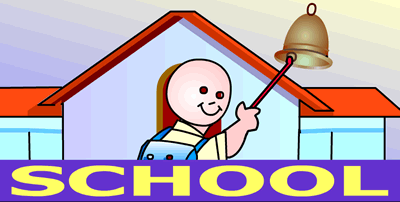
Dimdima
Online Children's Magazine from India

Dimdima
Online Children's Magazine from India

Agartala
CHILDREN'S CONTRIBUTIONS
The origin of Indian dance is shrouded in the mist of antiquity. The countless carvings, paintings and icons of dance in temples and shrines all over the country bear witness to the development of dance in the centuries gone by. The devadasis were literally the handmaids of the gods, and were dedicated to the temples of south India at an early age.
In India there are two forms of dances. They are:-
1) Folk dances
2) Classical dances.
Classical Dances:-
A fundamental attribute of all Indian classical dance forms is that they have sprung from the religious urges of the people and for their thematic content depends almost on the rich mythological lore of the Hindus.
The Classical dances are:-
Bharata Natyam:-
The various forms of classical dances in India, Bharata Natyam is believed to be the oldest because it is the form, which is based to the largest extent , on ancient texts. For centuries devadasis in the temples of south India danced it. Bharata Natyam is mostly populated in Tamil Nadu.
Kathak:-
A major style of the north, Kathak unlike Bharata Natyam has traditionally been danced by men and women both. Kathak gives equal importance to pure dance and mime. Mime concerns itself mainly with retelling some incidents from the life of Lord Krishna. Kathak performers include Birju Maharaj, Rashon Kumari, Damayanti Joshi.
Odissi:-
Orissa on the eastern seacoast is the home of odissi dance. Odissi throbs with motifs reflecting sculptural design. Some performers of odissi are Sanjukta Panigrahi, Kiran Sehgal.
Kathakali:-
Most important of the Indian dance drama styles is the kathakali from kerala.The stories of kathakali are taken mostly from the celebrated epics, the Ramayana and the Mahabharata. The perfomers of kathakalis are Ramankutty Nair, Krishnan Nair, Govindan Kutti.
Ras Leela:-
Manipur's famous classical dance form, Ras Leela, is based on the legendary love of Radha Krishna and the devotion of gopis to Lord Krishna. It was in the 18th century that the Ras Leela flowered and blossomed into a fine classical dance form. The performances can sometimes last all night.
Folk Dances:-
Indian folk and tribal dances range from simple Joyous celebrations of the seasons, the harvests or the birth of a child to ritualistic dances. The Kud dance of Jammu exhibits swaying, sinvous movements. The Bhangara of Punjab, the Dharmal of Haryana. Other folk dances from Haryana are Phag, Guga, Loor and Khoria.
The chief feature of folk dances from neighbouring Gujarat is the use of sticks. Each performer of the Garba, Garbi, Garbo and Dandiya. The bamboo which grows in abundance in the north east is used to advantage by the Mizos for their dance. Folk, tribal or classical, each Indian dance form is the product of centuries of development and the dancer's skill the fruits of religious practice.
EXPLORE MORE...
Dimdima is the Sanskrit word for ‘drumbeat’. In olden days, victory in battle was heralded by the beat of drums or any important news to be conveyed to the people used to be accompanied with drumbeats.
Bharatiya Vidya Bhavan
K. M Munshi Marg,
Chowpatty, Mumbai - 400 007
email : editor@dimdima.com
Bharatiya Vidya Bhavan
505, Sane Guruji Marg,
Tardeo, Mumbai - 400 034
email : promo@dimdima.com
Dimdima.com, the Children's Website of Bharatiya Vidya Bhavan launched in 2000 and came out with a Printed version of Dimdima Magazine in 2004. At present the Printed Version have more than 35,000 subscribers from India and Abroad.